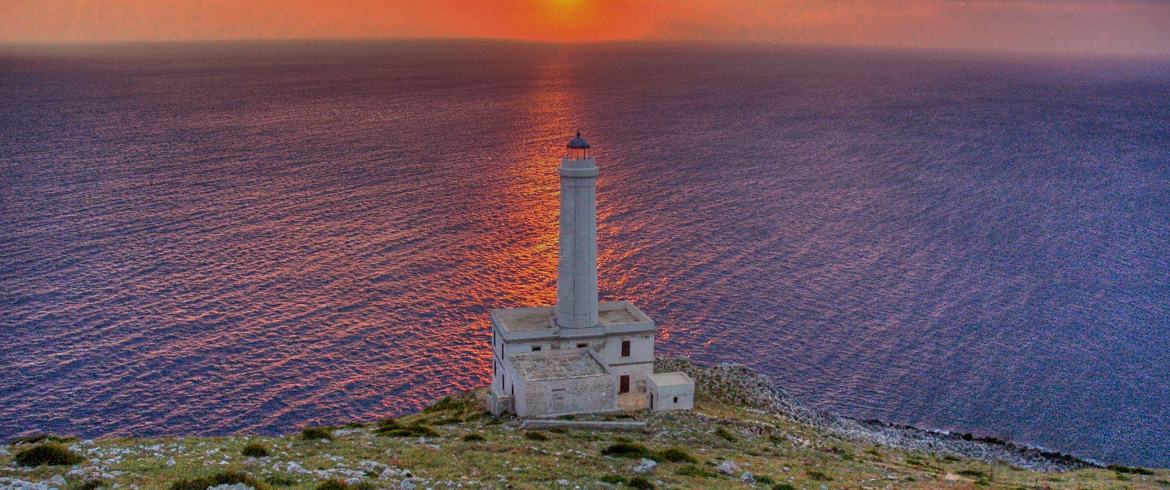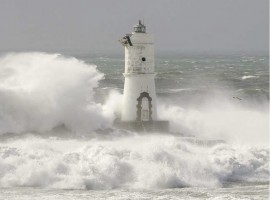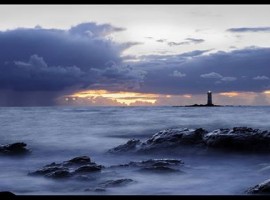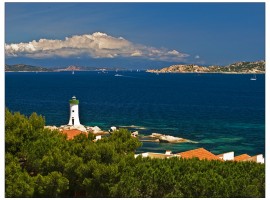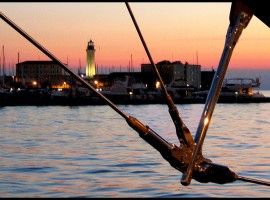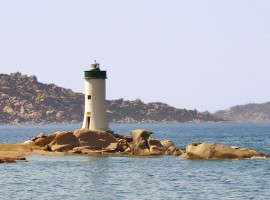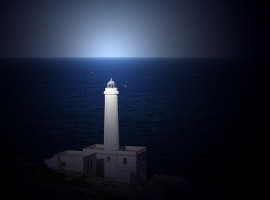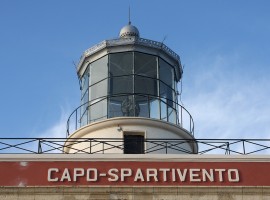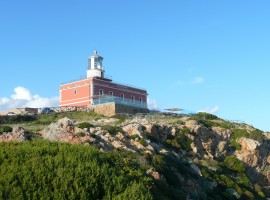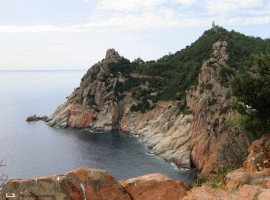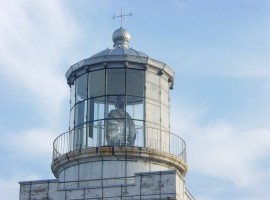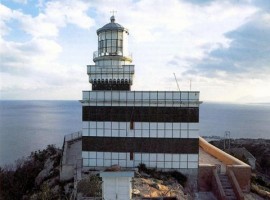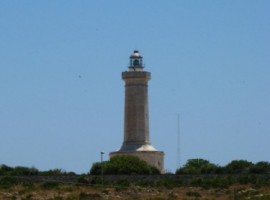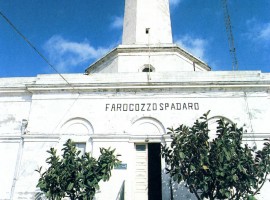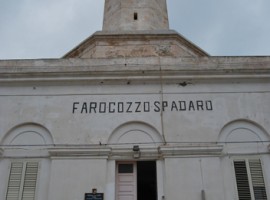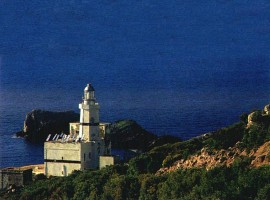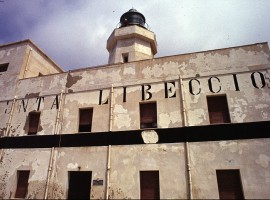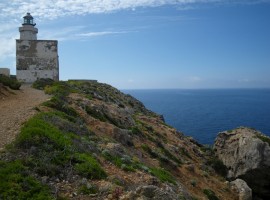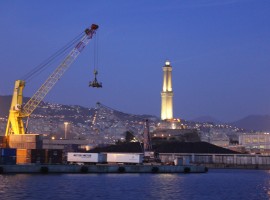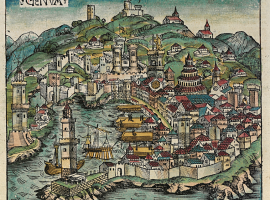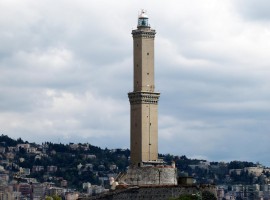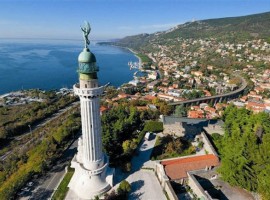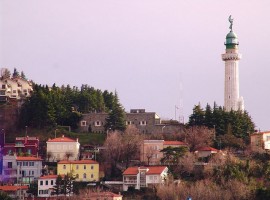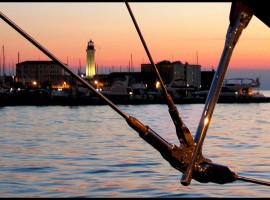Throw yourself back in time and imagine the solitary beauty of living in a lighthouse. Mix that with the comfort of a small inn and you have the ingredients for a memorable stay. A word of caution, once you have experienced one lighthouse’s hospitality you will want to seek out more… it could be a lovely obsession. Although radar and new technology (GPS) made them apparently redundant, we can still embrace the experience with a plethora of restored lighthouses.
Built to drive ships, massive and small ones, through fogs and sea storms into peaceful harbors, the first one seems to date back to 300 BC: the lighthouse on the Pharos isle, Greece, flashed its ray onto the Mediterranean Sea. In societies where sea commerce was the principal conduit for commerce the humble lighthouse was the threshold of prosperity and helped support the richness and cultural relevancy of a country.
Of course through the ages those wishing to conquer would seize lighthouses for strategic gain making the legacy of lighthouses all the more intriguing.
As works of human beings, the functionality was seldom divided from the search for beauty: the lighthouse of Alexandria of Egypt and the “Colossus of Rodi” were listed within the “World 7 wonders” and more recently the “Statue of Liberty”, gift of the French people to the city of New York is a clear example of this inner human tension.
Today’s change in travel trends (who can afford anymore to travel for weeks on a ship in the middle of the ocean) and the high level of different localization technologies had seemed to sign the word end on the “lighthouse story”: no more trips “to the lighthouse” and no more “the lighthouse guardian”.
Leaving those tall silent frontier soldiers alone with just the company of seagulls and winds was more than a pity: a real waste of an economic resource.
Thus the today’s renaissance of the lighthouse: they have become one of the “hottest” places where to spend some days off in a natural but often rustic environment.
Ditch the laptop and cell phone, stock up on groceries and embrace both the natural beauty and the simple pleasures of these locales. Away from unnatural schedules we impose ourselves, you will spend time reading that classical novel you left on your shelf for so long, listening to the wind sweeping the sea, drawing the cliffs and even climbing them or simply strolling around to discover where puffins nestle.
A word of caution, once you have experienced one lighthouse’s hospitality you will want to seek out more….it could be a lovely obsession. Luckily enough, Italy coasts offer a variety of lighthouses- almost 200- and though not all Italian lighthouses are equipped to host Guests, a very few are.
Lighthouse of Capo Spartivento , in Chia, Sardinia (Italy)
The lighthouse stands tall on the extreme south coast of Sardinia. Built in 1856 by the Italian Navy and abandoned in the late 1980s, the “Capo Spartivento” lighthouse is nowadays considered one of the most beautiful lighthouses in the world.
Still working as a lighthouse, flashing its ray onto the south Mediterranean Sea, the building hosts a luxurious guest house featuring 4 en-suite rooms and 2 external mini-flats, the latter with glass roof to sleep under a “blanket of stars”. From the 250 square meter terrace where the crystalline swimming pool and the shining white seating components lie you can relax, meditate admire a breathtaking view on the sea and the far away coasts of Africa.
If you wish to feel like an old “lighthouse guardian” just climb to the second floor where you will find a telescope to admire the stars and the moon.
Info: the accommodation has solar panels for hot water production, and 100% recycling. For information and reservations: Capo Spartivento
Lighthouse of Capo Bellavista, in Arbatax, Sardinia (Italy)
Sheltered at the top of a steep cliff 165 meters above the sea, the torch of this lighthouse has shined over the Mediterranean Sea since 1866.
Its notable peculiarity is the French liberty style torch, a bit out of place but charming none the less. One of the past guardians of the lighthouse spent his solitary days painting the inside walls of the structure, it makes one wonder how we would spend this time.
The lighthouse remains active members of the World Meteorological Organization, it measures now climatic temperatures, rain falling, atmosphere pressure, wind strength and direction and a nearby floating marker signals the tides and the swell intensity.
The Italian Navy wisely enough empowered it with new functions and this black and white checked tower is still there challenging winds and sea storms.
How Many Eyes Have Seen My Torch? Lighthouse of Cozzo Spadaro, in Capo Passero, Sicily (Italy)
One of the most beautiful lighthouses from the architectural point of view, the Sicilian lighthouse is currently the home of Captain Giovanni Lupo and his family. As all other lighthouse guardians, Mr Lupo is not afraid of solitude and he has learned to read the signs of nature. When seagulls stop flying and stay on the rocks looking into the same point of the horizon, a storm is breaking. If the approaching storm is cresting and lightening is streaking across the sky it is best to not venture up the 163 steps to the lit beacon.
The lighthouse is considered on of the most important one of the Italian coast thanks to its dominant location over the Thryrrenian Sea. It is not immediately on the sea front and to increase usefulness the architect built a massive base and an octagonal tower 36 m high so that the view was 360° wide both for those looking from the sea in search of a safe haven and for those at the top of the tower.
“How many eyes say my lighthouse torch without my knowing it?” wonders Capt. Giovanni Lupo. The “Stone Guest” of the Punta Libeccio lighthouse, Marettimo, Egadi islands, Sicily
Built in 1856 this lighthouse stand 74 meters above sea level and its rays meets the one of the Tunisi lighthouse of Cape Bon so the locals say the two lighthouses kiss each other every night. Yet, this “romantic virtual kiss” is not the only rumor about the Punta Libeccio lighthouse.
Located in a strategic position, designated for destruction by Nazi generals fiercely opposing American troop’s arrival in Sicily, the lighthouse witnessed many a shipwreck and many a corpse were found on its land. Many corpses remain unnamed and were buried in the local cemetery but rumor says they could not find rest and the peace a proper funeral would have provided. Ghosts of these lost souls were reported wandering around the lighthouse and even throwing small stones at the torch.
Hence, the lighthouse guardian started to dress the night dinner table for an invisible guest and this simple device stopped the ghostly visitors. The guardians regard these ghosts as friendly ones but the last lighthouse guardian never stopped the tradition, to be on the safe side.
The “Lanterna di Genova”, A Part of the City’s Identity. Lighthouse of Genova, in Genoa, North West Italy
Built in 1128 and destroyed on many an occasions it was finally rebuilt in 1543. Today visitors are welcome and you can challenge yourself climbing the 172 steps to the terrace high 72 meters above the sea. It is a good work out, wear your best athletic shoes and prepare for a delightful climb. Your efforts will be rewarded with an interesting view over the active port and the mountains surrounding the city.
The tower hosts a multimedia museum featuring approximately 150 films and documents about the city and its bustling harbor through the centuries.
Lighthous of Trieste, in Trieste, North East of Italy
Built from 1923 through 1929, it was symbolically aligned by the Italian King Vittorio Emanuele III to honor the World War One victims. The statue represents the “winged victory” at its pinnacle and the sculptor, Mr. Mayer, faced an unusual obstacle “the Bora”, a wind sweeping from North East. Last year the winds were clocked at 182 km/h which could have proved too much for the victory’s wings. Mr. Mayer’s graceful creation reached its peak by making those wings so flexible than when the Bora blows more than one citizen has said that the victory statue looks like a tall angel ready to start its flight over the Trieste gulf.
Once open to public and long considered a week end trip for Trieste families, it is now temporary closed to visits.
